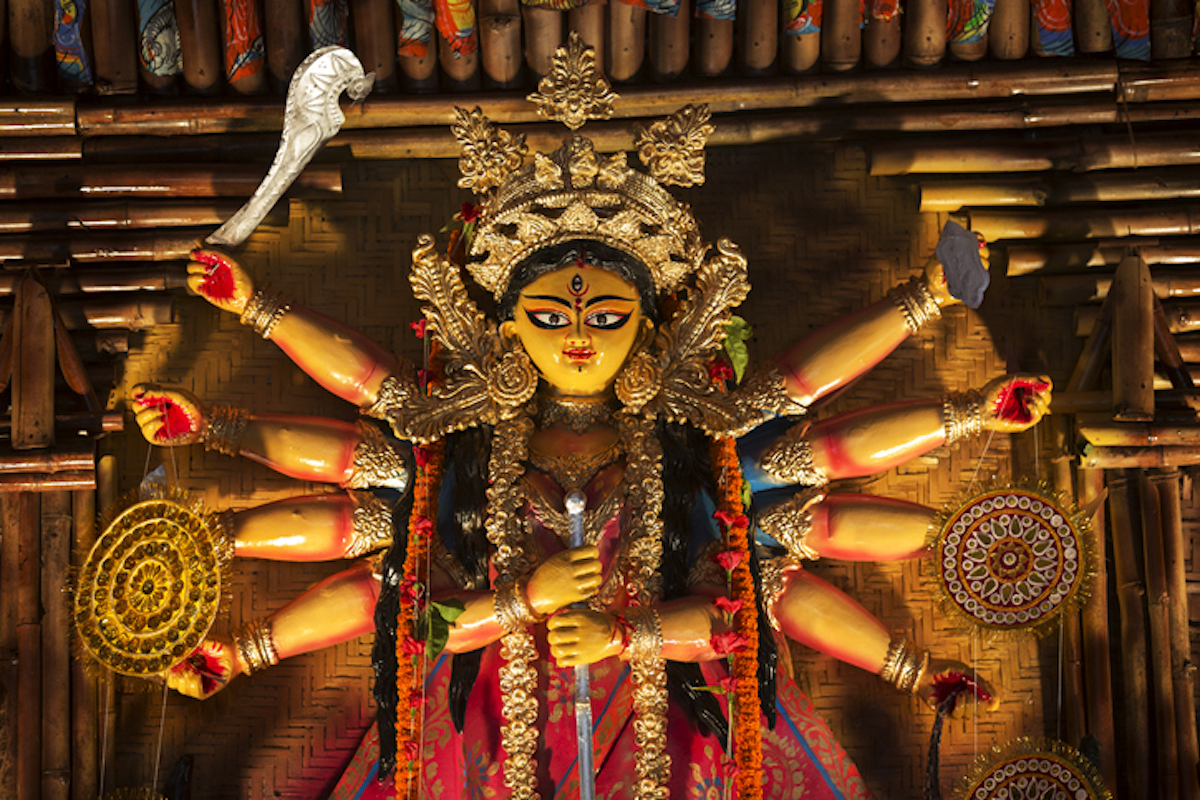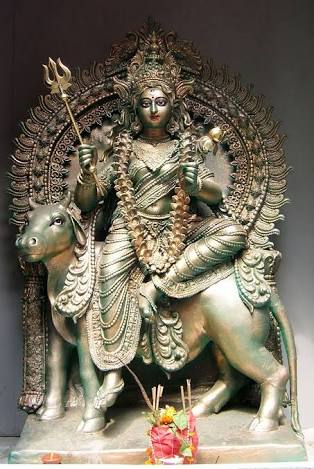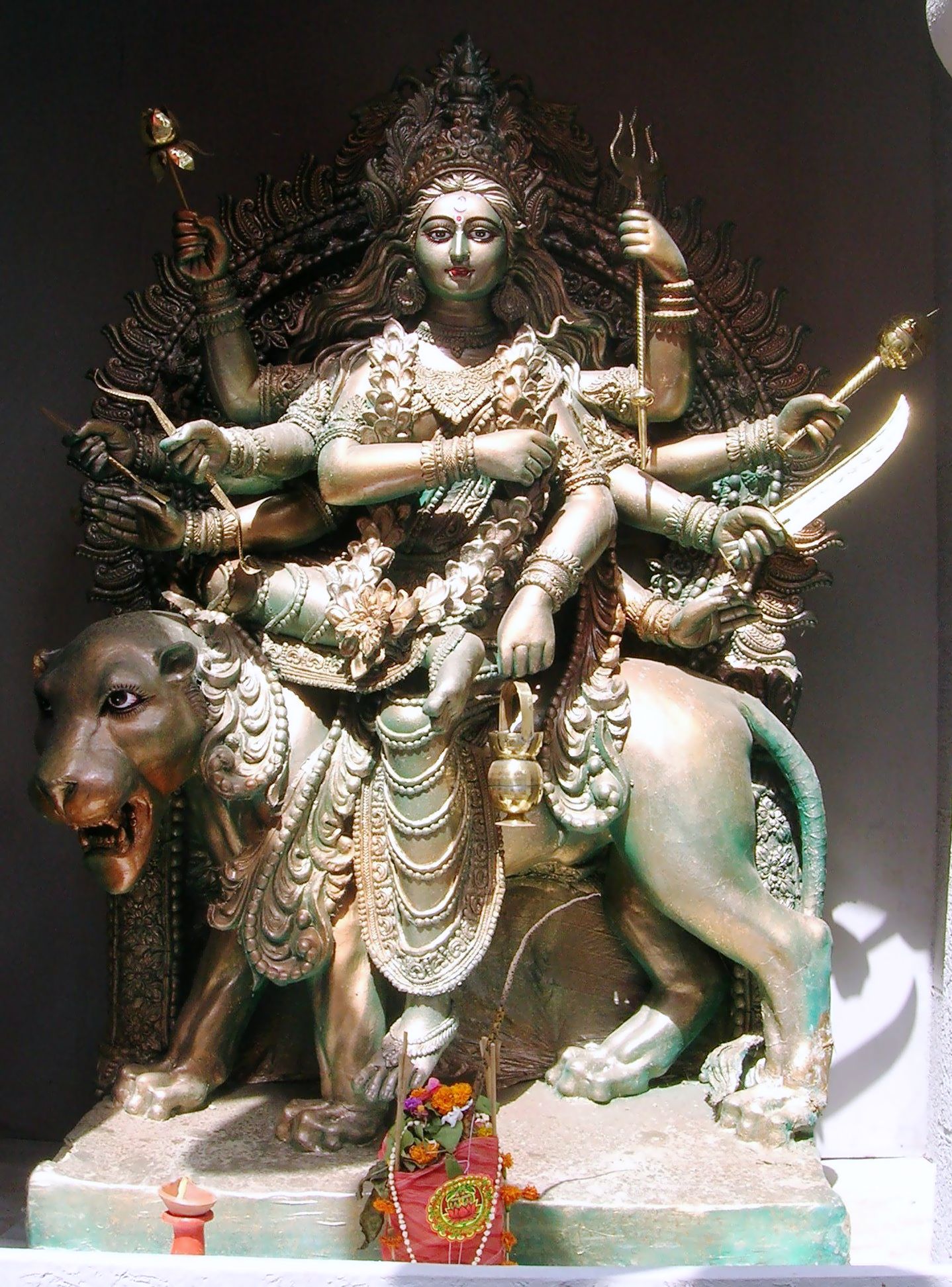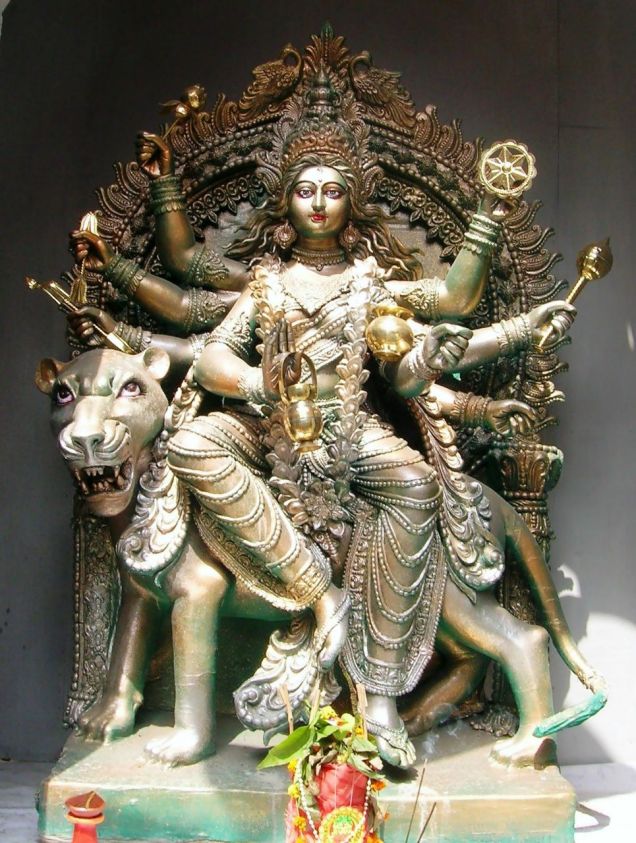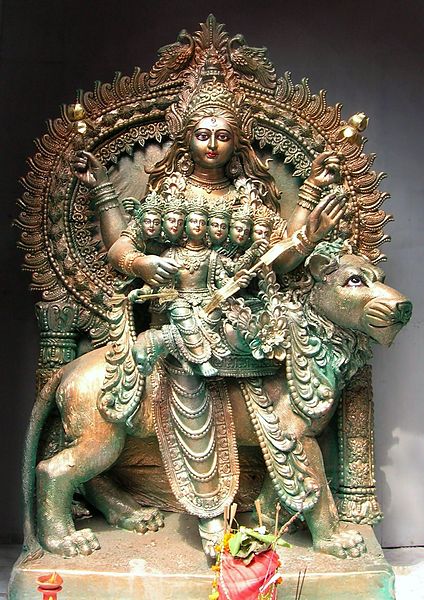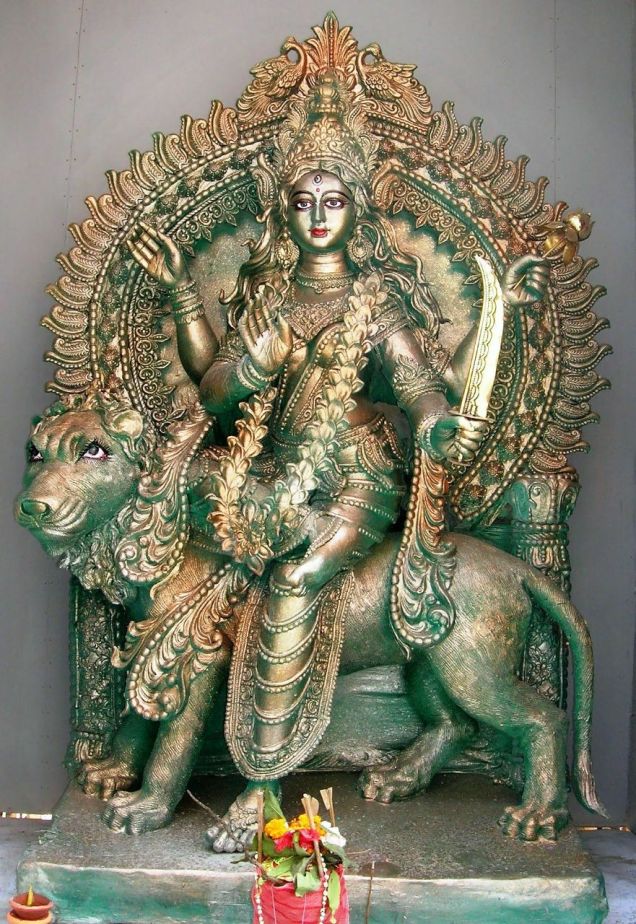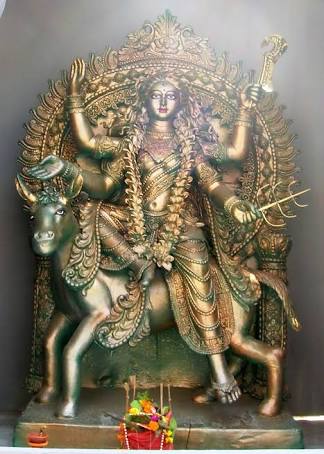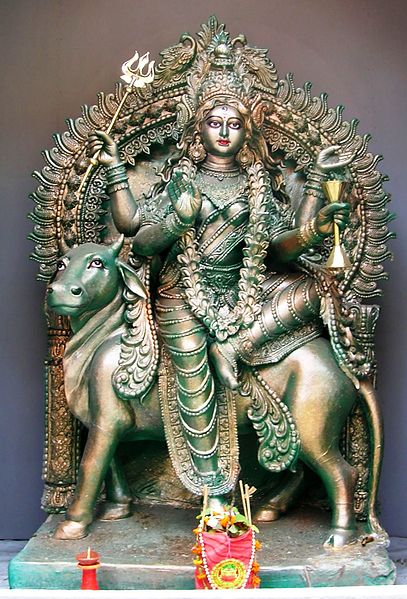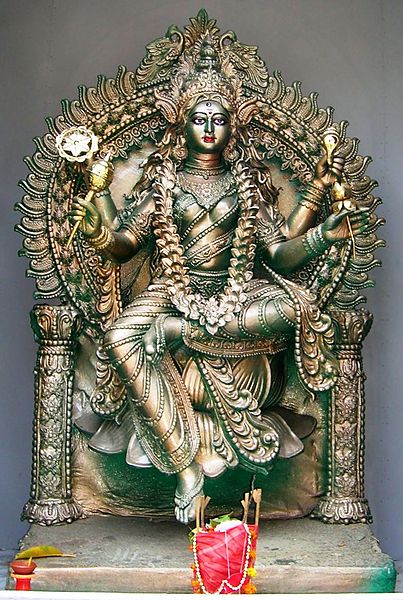‘Navratri’ means ‘nine nights.’ ‘Nava’ means ‘nine,’ and ‘Ratri’ means ‘night.’
When you see women clothed in traditional dresses, when you can feel the celebration in the air, breathe the scent of freshly made sweets, watch people visiting their friends and relatives, streets filled with lights and diyas with the sense of cheer and joy everywhere, you can make sure that it is the beginning of the festive season in India.
Everyone awaits this time of the year. This season brings us closer to the winters and it begins with the Navarati festival as per Hindu culture and religion.
Advertisement
This is the time of the year where we get the honor to worship the divine feminine, Devi, and her other nine forms. The nine-day festival is celebrated in the Hindu month of Ashwin, which falls between September 23 and October 22 of the Gregorian calendar.
What is Navratri?
Navratri is an important sacred festival for Hindu religious believers. It lasts nine nights (and ten days) and is celebrated by worshipping Devi/ Goddess Durga and her other nine forms every year in the autumn season. It is observed for different reasons and celebrated differently in various parts of the Indian cultural sphere. Goddess Durga and her various forms are believed to be the epitomes of different forms of power and have the ability to bring rejuvenation. The nine forms are Shailaputri, Brahmacharini, Chandraghanta, Kushmanda, Skanda Mata, Katyayani, Kalaratri, Mahagauri, and Siddhidatri.
Significance of the Navratri as per Hindu Mythology
The nine days of Navratri are dedicated to each Goddess embodiment for nine sacred days because it is believed that Goddess Shakti exists in various ferocious as well as innocent manifestations.
According to Hindu mythology, it is believed that Mother Durga defeated the demon- Mahishasura on this festivity, therefore the solemnization begins with lightening the houses, temples, and other divine places to spread cheer and gaiety everywhere, even in the darker corners.
In North India, the nine-day festival also known as Chaitra Navratri is observed to celebrate the victory of Lord Rama over evil Ravana. During the festival, people dress up in traditional clothing, distribute sweets, observe fasts, and offer prayers.
The occasion represents the victory of good over evil, virtue over vice, therefore the sacred glee starts with prayers, devotion, fasting, decorations, singing songs of devotions. People also invite young little girls to their homes to offer them, Prasad, as an offering from the Goddess and also worship them as they believe them to be pure and pious.
In Hindu narrations, Chaitra Navratri is also termed as Vasant/ Basant Navratri since this divine revelry marks the beginning of Vasant Ritu or Spring Season in Indian culture.
Navratri History
According to Hindu mythology, Lord Brahma, Vishnu, and Shiva gave their combined power to Goddess Durga to defeat the demon king Mahishasura after he attacked Trilok – Earth, Heaven, and Hell. As per the blessing of Lord Brahma only, no one could defeat Mahishasura, he could only be defeated by a woman. After a 15-day long battle, Goddess Durga killed him with her Trishul on the day of Mahalaya.
NAVRATRI 2021: Nine Nights are devoted to Nine forms of Goddess Durga
Devi Shailputri -Navratri 1: On the first day of Navratri we worship Devi Shailputri, Goddess Shailaputri. She is the daughter of the Mountain King Himavat and is a manifestation of the Hindu Mother Goddess, Durga. She is the first Navadurga honoured during the first day of Navratri and is a reincarnation of Goddess Sati. According to spiritual texts, Goddess Shailputri is believed to be a Devi of root chakra or Muladhara Chakra. Also, it is believed that the moon, the provider of all fortunes, which also regulates our emotions and moods is governed by Maa Shailputri, and by worshipping her any ill effects of the moon can be overcome by her devotees.
Devi Bharamcharnini – Navratri 2: The second day of Navratri is dedicated to the worship of Devi Brahmacharini. Brahamcharini means a devoted female student who lives in an Ashrama with her teachers/gurus along with other students. It is also the name of the second aspect of the goddess Durga (Parvati). According to some spiritual practices, Devi Brahmacharini resides at Swadisthan chakra. When she is worshipped with sheer focus and reverence, she helps the devotee get rid of negativity and blesses him with wisdom, happiness, peace, prosperity, and success.
Devi Chandraghanta – Navratri 3: Devi Chandraghanta is the third form of Goddess Parvati (Durga). Her name means “one who has a crescent moon on her forehead. Her third eye is always open and she is always ready for war against demons”. Her worship takes place on the third day of Navaratri. It is well known among Hindu believers that by her blessing, all the distresses, physical sufferings, all the sins, mental tribulations, and ghostly hurdles of the devotees can be eradicated. She is the owner of Manipura Chakra in spiritual knowledge.
Devi Kushmanda – Navratri 4: Kushmanda is worshiped on the fourth day of Navratri. She is believed to improve health and bestow wealth and strength. She has eight hands and that is why she is also known as Ashtabhuja Devi. She is centered in the “Anahata Chakra ”, in the spiritual realm, and she blesses her devotees with bliss if they worship her with a pure mind. As per Hindu mythology, Lord Vishnu was able to start creating the universe only when Maa Kushmanda smiled like a flower that blossomed with a bud. She created the world from nothing when there was eternal darkness all around.
Devi Skandamata – Navratri 5: The 5th day of Navratri is dedicated to Goddess Skandamata, the 5th manifestation of Goddess Durga. She is also the mother of Lord Kartikeya, who was chosen by the devatas as their commander in chief in the war against the demons. The image of Devi Skandamata portrays her holding baby Lord Skanda and a lotus in her right hand. She has four arms, three eyes, and a bright complexion. She is also called Padamasani since she is often depicted seated on a lotus flower in her idol. She is also worshiped in the form of Parvati, Maheshwari, or Mata Gauri. It is believed by the believers that by worshipping her, one can receive immense love and affection and can get all their desires fulfilled. Maa Skandamata resides in the Vishuddhi Chakra, symbolizing the aspects of creativity and communications.
Devi Katyayani – Navratri 6: The 6th day of the Navaratri festival is dedicated to Maa Katyayani. She is seen as the slayer of the tyrannical demon Mahishasura. As per the mythology, there was a sage named Katya and it was his wish that Maa Durga be born to his daughter. So he practiced austere penance for years to please the Gods. The trinity of Gods – Brahma, Vishnu, and Shiva – got enraged and they designed Goddess Durga, who was an end result of the abilities of all deities. Since she was born to Katya, therefore, she was called Katyayani.
Devi Katyayani is considered to be the regulator of our sixth Agnya chakra or the ‘Third Eye Chakra.’ By worshipping Maa Katyayani, you may develop great strength to fight all disease, sorrows, and fears.
Devi Kaalratri- Navratri 7: The 7th day of Navaratri is dedicated to Maa Kaalratri, she is the seventh of the nine forms of the Goddess Parvati. She is first referenced in the Durga Saptashati, Chapters 81-93 of the Markandeya Purana, the earliest known literature on the Goddess Durga. Kalaratri is widely regarded as one of the many destructive forms of the Mother Goddess, which include Mahakali, Bhadrakali, Mrityu, Rudrani, Chamunda, Kali, Bhairavi, Mrityu, Rudrani, Chamunda, Chandi, and Durga. Here, Kaal denotes time and death and Kaalratri means the one who is the Death of Kaal. Maa Kaalratri brings light into darkness, destroys ignorance. Well, this form also depicts the dark side – the superpower that creates havoc and removes all things bad and dirty. However, for her devotees, she brings calmness and courage.
Devi Mahagauri – Day 8: The 8th day of Navratri is dedicated to Maa Mahagauri, she is the eighth form of Parvati and amongst the Navadurgas. Mahagauri is worshipped on the eighth day of Navaratri. According to Hinduism, Goddess Mahagauri has the power to fulfill all the desires of her worshippers. The one who worships the goddess gets relief from all the sufferings in life. It is believed that Maa Mahagauri liberated the world from evil forces. Maa Mahagauri purifies the souls of her devotees and removes all their sins. She has a calming effect on the lives of Her devotees and helps them attain wisdom.
Maa Siddhidatri – Day 9: Maa Siddhidatri is the last among the nine Avtar of Maa Durga. She is worshipped on the 9th day of Navaratri. She is believed to be the possessor of 26 different wishes (Siddhis) which she grants to her true devotees. According to Hindu Mythology, Lord Shiva had achieved all those Siddhis by worshipping Maa Shakti only. With her gratitude, the half body of Lord Shiva became that of Maa Shakti, and therefore he was called Ardhnarishvar.
The Dashami Tithi or Vijayadashami is the last day or the 10th day of Navratri. It is also known as Dussehra and celebrates the triumph of Goddess Durga over Mahishasura. Its also known as Vijayadashami, the victory of good over evil, as Lord Rama defeated Ravana.
Advertisement

